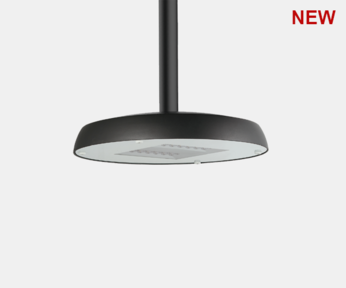With the acceleration of urbanization, the demand for outdoor lighting continues to increase. In parks, trails, squares, and commercial areas, Led Bollard Lighting have become one of the most common lighting solutions. This type of lamp not only provides efficient and energy-saving lighting, but also effectively improves the beauty of the city's night landscape. As a lamp exposed to the outdoor environment, the LED column lamp must be able to withstand various harsh weather conditions, such as strong winds, heavy rain, ice and snow, and extreme high and low temperatures. The durability and reliability of LED column lamps are particularly important. How to ensure the stability and long life of lamps in these harsh environments is a problem that every high-quality LED column lamp manufacturer must solve.
The durability of Led Bollard Lighting is inseparable from the high-quality materials they use. Lamps used outdoors need to face long-term sunlight exposure, moisture, sea salt spray, and pollutants in the air, which requires the lamp housing to have extremely strong corrosion resistance. LED column lamps are made of aluminum alloy or stainless steel. These materials have strong antioxidant and corrosion resistance, which can effectively prevent moisture or salt spray erosion and extend the service life of the lamp. The housing of the lamp has also undergone special waterproof treatment to ensure that it can reach IP65 or higher waterproof level, and can withstand the influence of severe weather such as heavy rain or even floods, so as to ensure the safety of internal electrical components and not be troubled by moisture penetration.
In areas with strong winds, the design of Led Bollard Lighting must also be able to cope with the challenges of strong winds. Many high-quality LED column lights adopt a stable support structure and a streamlined appearance design, which can remain stable in strong winds. The housing design of LED column lights usually takes into account the dredging of airflow, reduces wind resistance, and avoids wind damage to the lamp. For use in storms or extreme weather, the stability of LED column lights is crucial. Thickened materials are used in the design to enhance the wind resistance of the lamp to ensure that it is not easy to collapse or be damaged even in windy weather.
LED column lights also need to work normally under extreme temperature differences. Whether it is the cold northern region or the hot tropical region, LED column lights must have sufficient adaptability. The LED column lights use an efficient heat dissipation system to ensure that even in the hot summer, the LED chips inside the lamp will not overheat due to high temperatures, extending their service life. In extremely cold environments, LED column lights can operate normally at temperatures as low as -40°C, which makes LED column lights perform well in both the severe cold environment of the Arctic Circle and the hot weather. By using cold-resistant and high-temperature resistant materials, LED column lights can effectively cope with drastic changes in temperature, thereby ensuring their long-term stable operation.
Another major advantage of LED column lights is their long life characteristics. Compared with traditional halogen lamps or metal halide lamps, the service life of LED column lights can usually reach 50,000 hours or even longer. This means that even in long periods of bad weather, LED column lights do not need to frequently replace bulbs, greatly reducing maintenance costs and maintenance frequency. LED column lights are usually designed to be shockproof and can withstand some minor vibrations and shocks. Even during urban peak hours or encountering strong winds, the performance of the lamps will not be affected and they can still provide stable lighting.
Modern LED column lights also incorporate intelligent control and adaptive technology to further improve their performance in bad weather. Many high-end LED column lights are equipped with intelligent control systems that can automatically adjust the brightness according to environmental conditions. For example, in heavy rain, the light brightness can be appropriately reduced as needed to avoid excessive use of electricity and extend the life of the lamps. In extreme weather, the intelligent system can also detect the status of the lamps through remote monitoring, and promptly remind users to perform maintenance to ensure that the lighting system is always in the best condition.

 English
English Español
Español 简体中文
简体中文













